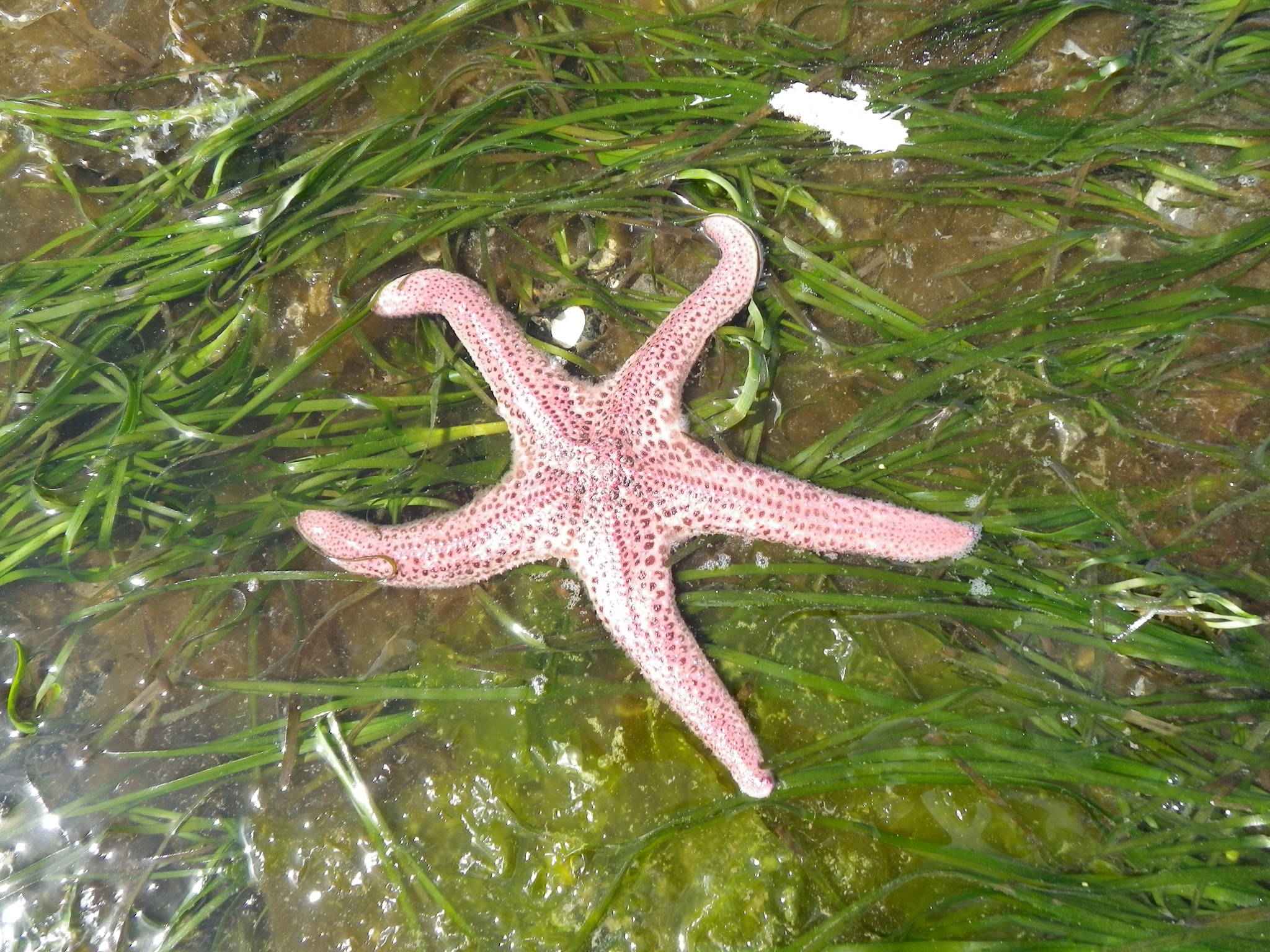The eelgrass meadow surrounding Indian Island has grown denser than last year, according to local researchers monitoring Indian Island and Fishing Bay, but still has not rebounded to levels seen when monitoring began in 2009. Most of the increase was at the deep end of the inter-tidal zone, where turbidity limits the amount of sunlight penetrating the water. Turbidity can be caused by storm water runoff or by algal blooms, says Kwiaht director Russel Barsh. “Winter 2016 was so mild that algal blooms began in February and used up the available nutrients long before the eelgrass growing season,” Barsh explains. “Our waters were unusually clear in April and May.”
Other indicators of the health of the bay ecosystem are mixed. The abundance of monitored fish species such as Bay Pipefish, Plainfin Midshipmen and Shiner Perch are down this year, as is the diversity of fish species seen at Indian Island. “We suspect this is also a response to unusually warm water,” Barsh says. “It looks like climate change is the big story here, rather than pollution.”
Ochre Star numbers remain stable two years after the outbreak of Seastar Wasting Syndrome (SWS) on the Pacific Coast. Inter-tidal sea stars at Indian Island often topped 500 before the epidemic. June survey numbers were 262 in 2015 and 216 in 2016, with a large proportion of smaller juvenile sea stars. Up to 8 percent of the sea stars counted in summer 2015 exhibited SWS symptoms, but morbidity has been no greater than 3 percent thus far this year. “A more disturbing trend has been the almost complete disappearance of other inter-tidal species such as Sunflower Stars and Short-Spined Stars,” says Kwiaht director Russel Barsh. “With the record warm weather of the past year, we would expect fewer sea stars to remain in the inter-tidal zone, but other factors may also be involved.”
Indian Island’s Black Oystercatchers returned to their nest at the end of May, but it is too early to tell whether they will be able to hatch and fledge any chicks this year. No chicks have survived since 2012. “On low tide days our volunteer stewards ask visitors to stay on the beach while the Oystercatchers are nesting, but a growing number of people kayak or wade to Indian Island when we are not there, and climb up to the nesting area,” Barsh says. “Any disruption leaves eggs and chicks vulnerable to predators such as bald eagles, ravens, minks and otters.” Rough-Winged Swallows and Killdeer have been more successful fledging chicks on Indian Island than Oystercatcher, perhaps because swallow nests are concealed in deep burrows, and Killdeer chicks are precocious and quickly learn to run and fly. Oystercatcher nests are exposed, and chicks develop slowly.
Kwiaht scientists and volunteers will continue surveys of Indian Island marine life during daytime low tides through the end of July, and are happy to answer questions. And when the tide is up, the Indian Island Marine Health Observatory invites islanders as well as visitors to enjoy the fish tank and new Indian Island display panels at Orcas Wild.
For further information visit: www.indianisland.info.



